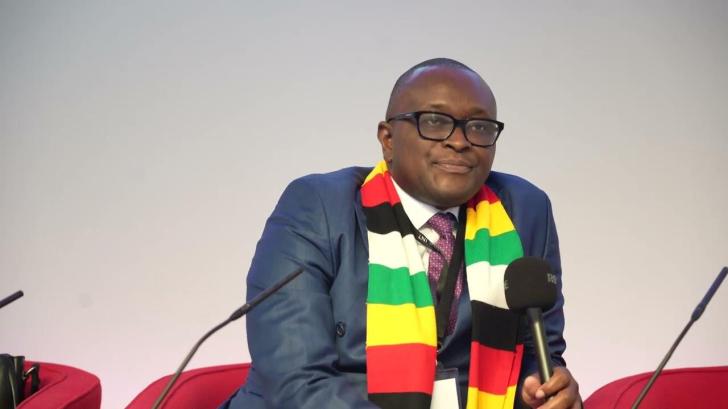News / National
Farm input abusers face blacklist
06 Nov 2024 at 07:03hrs |
0 Views

The government has introduced stringent new measures to curb the theft and abuse of agricultural inputs under the Presidential Input Scheme, as part of its ongoing efforts to improve food security and agricultural productivity.
Information Minister Jenfan Muswere, speaking at the post-Cabinet briefing on Tuesday, announced that officials found involved in the misuse of inputs will be blacklisted, and ward committees implicated in such activities will face bans.
"The 2024-25 summer season plan aims to increase production of cereals to 3,274,200 metric tonnes, compared to the 744,271 metric tonnes produced in the 2023-24 season," Muswere said. "The overall production volumes of major crops are expected to rise by 347%, from 915,000 metric tonnes to over four million metric tonnes."
The government is targeting a significant boost in crop production, including 3.3 million metric tonnes of cereals and 819,500 metric tonnes of pulses.
As part of the efforts to ensure fairness and transparency in the distribution of inputs, Muswere outlined several new measures. Under the Presidential Input Scheme, 91% of the targeted 9.5 million plots have already been prepared by 86% of the targeted 3.5 million households. By November 24, 2024, all beneficiaries will receive 50% of their inputs.
To tackle input abuse, the government has adopted an improved standard operating procedure with role clarity and oversight. This includes the blacklisting of corrupt officials and banning ward committees found complicit in the abuse of inputs.
In addition to government efforts, Muswere provided updates on other agricultural initiatives, including the National Enhanced Agricultural Productivity Scheme. This initiative aims to establish 52,500 hectares under maize, soybeans, traditional grains, and sunflower, with a production target of 256,000 metric tonnes. The private sector has pledged to fund the establishment of 95,046 hectares under various crops, including maize, soybeans, and sunflowers.
Muswere also highlighted the key role of the Agricultural and Rural Development Authority (ARDA) in planting 100,000 hectares of maize and 50,000 hectares of traditional grains. Private sector support for cotton farming will see 418,800 farmers planting 270,000 hectares of cotton. The tobacco sector is also set to increase production, with a target of 300 million kilograms for the 2024-25 season, and over 117,000 growers already registered.
Beyond agriculture, Muswere revealed that Cabinet had approved a public-private partnership project aimed at upgrading and constructing the Harare-Nyamapanda Highway and Nyamapanda border. The project will involve a special purpose vehicle to facilitate the flow of funds between stakeholders.
In a significant development for technology and environmental monitoring, Muswere also announced the successful launch of Zimbabwe's second Earth observation satellite, ZimSat-2. The satellite, launched from Russia, was developed through a collaborative research program between the Zimbabwe National Geospatial and Space Agency (ZINGSA) and Southwest State University in Russia. ZimSat-2 will be used for agricultural monitoring, environmental protection, and natural resource management. It is designed to track crop health, predict yields, and identify nutrient deficiencies.
These measures and developments reflect the government's comprehensive approach to boosting agricultural productivity, supporting infrastructure development, and enhancing technology-driven solutions for sustainable growth.
Information Minister Jenfan Muswere, speaking at the post-Cabinet briefing on Tuesday, announced that officials found involved in the misuse of inputs will be blacklisted, and ward committees implicated in such activities will face bans.
"The 2024-25 summer season plan aims to increase production of cereals to 3,274,200 metric tonnes, compared to the 744,271 metric tonnes produced in the 2023-24 season," Muswere said. "The overall production volumes of major crops are expected to rise by 347%, from 915,000 metric tonnes to over four million metric tonnes."
The government is targeting a significant boost in crop production, including 3.3 million metric tonnes of cereals and 819,500 metric tonnes of pulses.
As part of the efforts to ensure fairness and transparency in the distribution of inputs, Muswere outlined several new measures. Under the Presidential Input Scheme, 91% of the targeted 9.5 million plots have already been prepared by 86% of the targeted 3.5 million households. By November 24, 2024, all beneficiaries will receive 50% of their inputs.
In addition to government efforts, Muswere provided updates on other agricultural initiatives, including the National Enhanced Agricultural Productivity Scheme. This initiative aims to establish 52,500 hectares under maize, soybeans, traditional grains, and sunflower, with a production target of 256,000 metric tonnes. The private sector has pledged to fund the establishment of 95,046 hectares under various crops, including maize, soybeans, and sunflowers.
Muswere also highlighted the key role of the Agricultural and Rural Development Authority (ARDA) in planting 100,000 hectares of maize and 50,000 hectares of traditional grains. Private sector support for cotton farming will see 418,800 farmers planting 270,000 hectares of cotton. The tobacco sector is also set to increase production, with a target of 300 million kilograms for the 2024-25 season, and over 117,000 growers already registered.
Beyond agriculture, Muswere revealed that Cabinet had approved a public-private partnership project aimed at upgrading and constructing the Harare-Nyamapanda Highway and Nyamapanda border. The project will involve a special purpose vehicle to facilitate the flow of funds between stakeholders.
In a significant development for technology and environmental monitoring, Muswere also announced the successful launch of Zimbabwe's second Earth observation satellite, ZimSat-2. The satellite, launched from Russia, was developed through a collaborative research program between the Zimbabwe National Geospatial and Space Agency (ZINGSA) and Southwest State University in Russia. ZimSat-2 will be used for agricultural monitoring, environmental protection, and natural resource management. It is designed to track crop health, predict yields, and identify nutrient deficiencies.
These measures and developments reflect the government's comprehensive approach to boosting agricultural productivity, supporting infrastructure development, and enhancing technology-driven solutions for sustainable growth.
Source - newsday
Join the discussion
Loading comments…





























